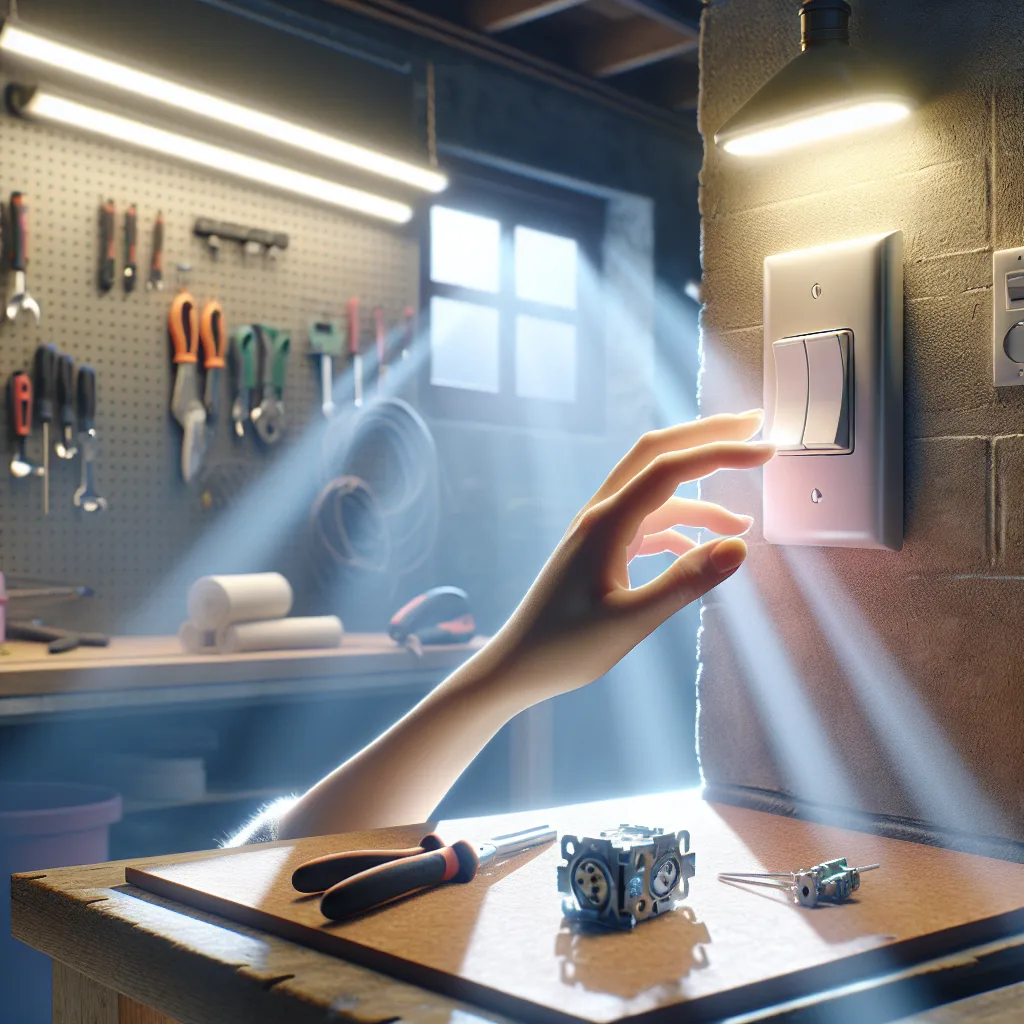Want to make your LED shop lights smart? Learn what a neutral wire is, why you need it for most smart switches, and what to do if you don’t have one.
So, I was staring at the fluorescent shop lights in my garage the other day. You know the ones—long, humming tubes that take a second to flicker to life. They do the job, but they feel… dumb. In a world of smart everything, my garage lighting felt like a relic. My first thought was, “How hard could it be to make these a little smarter?”
I just wanted to be able to turn them on from my phone or maybe have them pop on automatically when I open the garage door. Simple stuff. But as I started looking into it, I ran into a wall. A wall that, electrically speaking, might be missing something important: a neutral wire.
It turns out, this is a common roadblock for anyone wanting to upgrade to a smart switch. And it all comes down to a bit of wiring most of us never think about.
What’s a Neutral Wire, Anyway?
Let’s get this out of the way. I’m not an electrician, but I’ve done enough tinkering to learn the basics. Think of your home’s wiring like a simple loop. To get a light to turn on, electricity has to flow from the power source, through the switch, to the light, and then back to the source to complete the circle.
- The hot wire brings the power in.
- The neutral wire takes the power back out, completing the circuit.
A standard “dumb” switch is just a gate on the hot wire. When you flip it, you’re either opening or closing that gate. It doesn’t need its own continuous power source to work.
But a smart switch is different. It’s a tiny computer. It has a little radio inside to talk to your Wi-Fi or smart home hub. And just like any computer, it needs a constant, tiny trickle of power to stay on and listen for your commands. It gets this power by tapping into the hot wire and sending it back through the neutral wire.
Without that neutral wire, the smart switch has no way to complete its own circuit and stay powered on.
How to Tell If You Have a Neutral Wire
So, how do you know if you’re good to go? The only way to be sure is to take a look inside the switch box.
First, a very important warning: Turn off the power at your circuit breaker before you touch anything inside a switch box. Seriously. If you’re not 100% comfortable with this, call an electrician. It’s not worth the risk.
Once the power is off, you can unscrew the faceplate and pull the switch out from the wall. Here’s what you might see:
- If you have a neutral wire: You’ll likely see a bundle of two or more white wires tucked away in the back of the box, connected with a wire nut. They probably aren’t even connected to your current switch. This is the best-case scenario.
- If you don’t have a neutral wire: You’ll probably only see two wires connected to your switch (one hot, one going to the light) and a bare copper or green wire, which is the ground.
In many older homes, running a neutral wire to every switch box wasn’t common practice. It was seen as saving copper and money. So if your house is a few decades old, you might be out of luck.
Okay, So What Are My Options?
Let’s say you’ve confirmed you have that lovely bundle of white neutral wires. Great! You can buy just about any smart switch you want. Installation is usually straightforward: connect the hot, the load (the wire going to the light), the neutral, and the ground. Follow the instructions, and you’ll have smart lights in no time.
But what if you’re staring at a box with no neutral? Don’t despair. You still have a few options.
- “No-Neutral” Smart Switches: Some companies make smart switches specifically designed for this problem. They work by sending a tiny amount of current through the light fixture itself to power the switch. The catch? They don’t always play nice with low-power LED bulbs. You might get some flickering or find that the lights glow faintly even when they’re “off.” Be sure to check the compatibility with your specific LED tubes.
- Smart Bulbs or Tubes: This is often the easiest workaround. Instead of making the switch smart, you make the light itself smart. You can now find smart LED tubes that can replace your old fluorescent ones. You just pop them in, leave the old wall switch on, and control them entirely from an app or a voice assistant. The downside is they can be more expensive, and if someone flips the physical switch off, your smart control is cut off.
-
Smart Plugs (For Plug-In Lights): If your shop lights plug into an outlet rather than being hardwired, your job is incredibly simple. Just get a smart plug. Plug the light into it, plug it into the wall, and you’re done. Instant smarts.
For me, I got lucky. After shutting off the breaker and pulling out the switch, I found that tell-tale bundle of white wires tucked in the back. A quick installation later, and my “dumb” garage lights were officially smart. It felt like a huge win from such a small project. It’s not about revolutionizing my life; it’s just about making one little thing work a little bit better. And sometimes, that’s the most satisfying upgrade of all.
